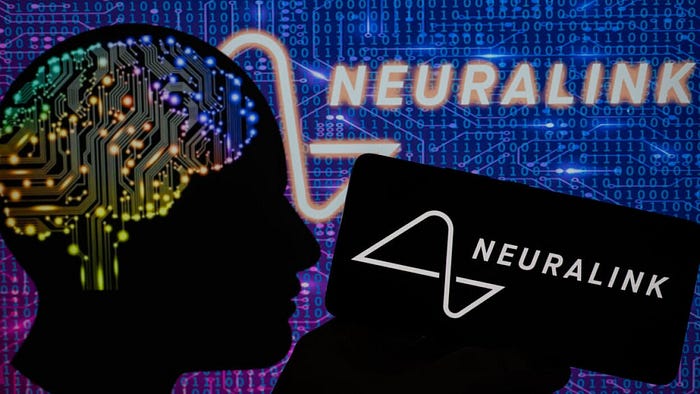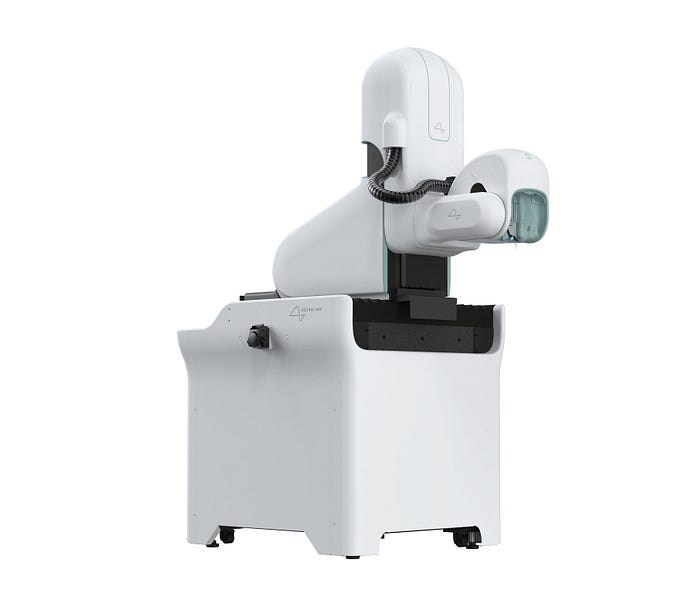
Neuralink’s BCI Gets Implanted Into Its First Human!
Last Updated on February 3, 2024 by Editorial Team
Author(s): Yakshith Kommineni
Originally published on Towards AI.

After a long wait, Elon Musk’s company, Neuralink had its first BCI implantation in a human yesterday. This is something that has been highly anticipated by the tech world as Elon has been teasing us for quite some time. If you don’t know what a BCI is, it’s a device that records your brain activity and sends it to a computer for various operations. These can include controlling prosthetics for disabled patients and providing speech for patients with speech-restricting diseases. There are many other applications outside of the healthcare industry, such as gaming or using electronics. They don’t always have to be implanted into your brain as there are non-invasive BCIs that just sit on your head. For more information on BCIs and their capabilities click here.
Why does this matter?
Neuralink isn’t the first company to have human trials. Not the second either. Not even third. Many companies have already released products for consumers. Such as Neurable’s MW75 which is available for pre-order and Emotiv’s EPOC X. However, these are non-invasive BCIs. This means they’re just electrodes that sit on your scalp. There are only invasive BCIs for patients with specific disorders/disabilities. This means that the use of invasive BCIs isn’t available to the public yet.

What exactly is Neuralink’s product?

As you can see above, Elon named the first Neuralink product, “Telepathy”. Derived from the name, he explains it as a tool that you can use to control your device by simply thinking. He adds that he imagines Stephen Hawking could communicate faster than a speed typist. Setting this as the benchmark for Telepathy. According to this tweet, Telepathy seems to be more of a consumer product rather than something just for diseased patients. In an interview with Zuby, a YouTuber, Elon explains how he believes Telepathy (referred to as Neuralink) could be as essential to our lives as smartphones. Smartphones aren’t 100% essential in our daily lives but it puts us at a massive disadvantage if we don’t have one. Elon also adds that if this were to happen with Telepathy, it would be decades from today and a very long-term goal for Neuralink. Their short-term goal is a “generalized input-output device” that could interface with a given part of the brain to solve many debilitating issues. Their long-term goal is to achieve possible alignment with artificial general intelligence, basically making us into cyborgs.
What can Telepathy lead to?

Connecting your brain to a computer simply sounds insane but there are much more things possible than you think. Not to mention all the different industries this can impact. Below are a few of those industries!
- Gaming/Entertainment: BCIs with VR/AR integrations can make for a great gaming experience. It will feel unbelievably real because you’re visually in the actual environment and neurologically in the game, moving around and making decisions.
- Education: BCIs in the education industry can be stepping stones to personalized learning. Since the way each student learns is different, it would be of great value if the material is tailored to meet the student’s learning needs.
- Military/Defense: BCIs can enable more efficient methods of communication during high-stakes moments. This makes a big impact since radios are very finicky, especially in secluded areas. Just imagine talking to your general via thinking to him.
What kind of ethical concerns do BCIs like Telepathy pose?
Implanting a chip into your brain sounds pretty abnormal, let alone the operation of connecting it to a brain. Here are what Elon Musk’s X followers think:



As you can see, many people are against Elon Musk’s idea of a BCI. Elon Musk has quite a controversial history. His idea of BCIs is different from all the other companies working on them, too, because Neuralink aims to take BCIs to the next level with possible artificial general intelligence integration. Again turning us into robots. Another reason is that it’s invasive. Which means it needs complex neurological surgery. Many BCIs are non-invasive because of safety concerns. The Neuralink implantation surgery is also done by an AI robot. The robot can be trained constantly, but the public will always be doubtful because it’s a robot.

There are also concerns about animal testing in Neurable as they have been using entirely monkeys to test their brain chips up until now since they got their first human. This has brought great anger to animal rights activists, especially after the fact that Neuralink announced that a monkey died during their testing process but still denies animal cruelty allegations. Questioning Neuralink’s integrity. In a blog article, the company explained how there was a complication with the use of an FDA-approved product (BioGlue), and the monkey was unfortunately euthanized.
Key Takeaways/TL;DR
- Neuralink’s Milestone: Elon Musk’s Neuralink achieves a major milestone by implanting a brain chip in a human, opening possibilities for thought-controlled interactions.
- Telepathy’s Purpose: Neuralink’s product, “Telepathy,” aims to enable thought-based device control, potentially becoming as essential as smartphones in the long term.
- Gaming/Entertainment: BCIs with VR/AR integration could revolutionize gaming experiences.
- Education: BCIs may pave the way for personalized learning in the education sector.
- Military/Defense: BCIs could enhance communication efficiency in critical situations.
- Ethical Concerns: Invasive nature, complex surgeries, and animal testing practices raise ethical questions and spark debates.
- Controversies: Neuralink’s vision of integrating BCIs with artificial general intelligence generates controversies, and public opinions are divided on safety and ethical grounds.
References
- Business, Hannah Ryan, CNN. “Elon Musk’s Neuralink Confirms Monkeys Died in Project, Denies Animal Cruelty Claims.” CNN, 17 Feb. 2022, www.cnn.com/2022/02/17/business/elon-musk-neuralink-animal-cruelty-intl-scli/index.html.
- “Elon Musk’s Neuralink Brain Chip Implanted in 1st Human — National U+007C Globalnews.ca.” Global News, globalnews.ca/news/10259486/elon-musk-neuralink-brain-chip-implant-human/. Accessed 31 Jan. 2024.
- “IF Design — Neuralink R1 Robot.” Ifdesign.com, ifdesign.com/en/winner-ranking/project/neuralink-r1-robot/309555.
- ““Recovering Well”: Elon Musk’s Neuralink Implants Its First Brain Chip in Human.” CTVNews, 29 Jan. 2024, www.ctvnews.ca/sci-tech/recovering-well-elon-musk-s-neuralink-implants-its-first-brain-chip-in-human-1.6747277. Accessed 31 Jan. 2024.
- “Redirect Notice.” Google.com, 2024, www.google.com/url?sa=i&url=https%3A%2F%2Fmashable.com%2Farticle%2Fneuralink-brain-implant-human-trial-first-elon-musk&psig=AOvVaw3vjAlqWP3WSI_xYkhVgBXO&ust=1706748463595000&source=images&cd=vfe&opi=89978449&ved=0CBYQjhxqFwoTCIium9WzhoQDFQAAAAAdAAAAABAE. Accessed 31 Jan. 2024.
- “SUPERCUT: Neuralink Show & Tell Event (23 Minutes).” Www.youtube.com, www.youtube.com/watch?v=VlDx6yzomEg.
- Wattles, Jackie. “Elon Musk’s Neuralink Shows Brain Implant Prototype and Robotic Surgeon during Recruiting Event U+007C CNN Business.” CNN, 1 Dec. 2022, www.cnn.com/2022/11/30/tech/elon-musk-neuralink-show-and-tell-scn/index.html.
Hello! I’m Yakshith, a high school student and brain-computer interface (BCI) enthusiast. I hope you learned something new from this and if you have any sort of feedback or suggestions, don’t hesitate to reach out. Thank you for reading and don’t forget to check out my X, Substack, LinkedIn, and YouTube!
Join thousands of data leaders on the AI newsletter. Join over 80,000 subscribers and keep up to date with the latest developments in AI. From research to projects and ideas. If you are building an AI startup, an AI-related product, or a service, we invite you to consider becoming a sponsor.
Published via Towards AI
Take our 90+ lesson From Beginner to Advanced LLM Developer Certification: From choosing a project to deploying a working product this is the most comprehensive and practical LLM course out there!
Towards AI has published Building LLMs for Production—our 470+ page guide to mastering LLMs with practical projects and expert insights!

Discover Your Dream AI Career at Towards AI Jobs
Towards AI has built a jobs board tailored specifically to Machine Learning and Data Science Jobs and Skills. Our software searches for live AI jobs each hour, labels and categorises them and makes them easily searchable. Explore over 40,000 live jobs today with Towards AI Jobs!
Note: Content contains the views of the contributing authors and not Towards AI.














